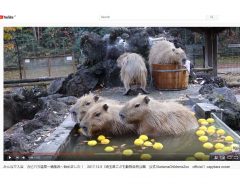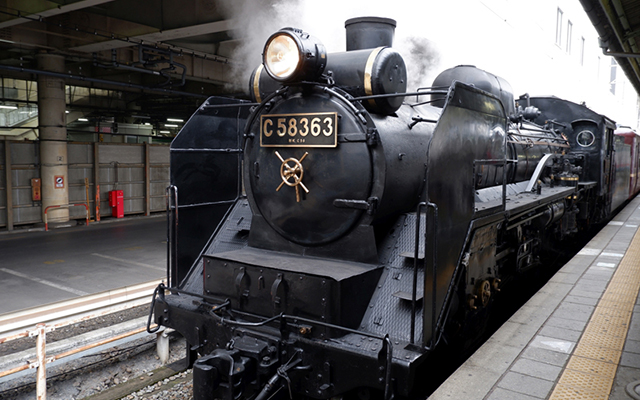- Source:
- © JAPAN Forward
- Tags:
- Chichibu / Chichibu Railroad / JAPAN Forward / Paleo Express / Railroad / Saitama Prefecture / steam engine / steam locomotive
Related Article
-

[Hidden Wonders of Japan] A Maiko Does the Ceremonial First Pitch at Koshien Baseball Stadium
-

Treasures along the Arakawa Line: Retro Amusement reopens
-

Popular “Animal Onsen” at Chikozan Park Children’s Zoo Open Through March 2020
-

Ajirojima Islet: Where ‘Crumbs of Shooting Stars’ Sleep
-

Fuji Rock 2018 and YouTube – Japan’s Music Magic goes Global [Video]
-

Fans Vote Hello Kitty the Most ‘Kawaii’ Sanrio Character for 2019



Written by Earl Kinmonth for JAPAN Forward
On March 31, I and my older son took a day trip on the Paleo Express, a steam train operated by the Chichibu Railroad between Kumagaya and Mitsumineguchi in Saitama Prefecture, northwest of Tokyo.
The name of the train comes from that of a dinosaur that inhabited the area millions of years ago. We made our trip in the company of Japanese of all ages, from toddlers to the quite elderly, and a large number of foreign tourists, both European and Asian.
The Allure of the Steam Engine
The mix of riders is testimony to the fascination that steam engines hold for people irrespective of age, nationality, or gender. Even when it is not moving, a steam engine seems like something that is alive rather than being simply a piece of machinery.
Just standing still, a steam engine under fire inhales, exhales, spits, and makes various sounds such that it seems like an animal that is anxious to get moving. When the whistle is blown and smoke pours from it stack, the sense of the engine being alive is heightened.
Photo by Galileo Ferrari | © JAPAN Forward
Further testimony to the interest in steam trains in Japan is the number of people who turn out to view or photograph any steam train run. Even though the Paleo Express runs at least twice a week for much of the year, all along the route there were clusters of people waving to the train from nearby streets and fields. Others had elaborate camera setups with as many as three cameras on tripods.
When a steam train is run on a line that does not have a regular steam service, the crowds can be enormous. On a one-off steam run to Choshi in Chiba some years ago, there were throngs along the road and in fields along the route such that extra police and hired security guards were needed to prevent accidents.
Photo by Galileo Ferrari | © JAPAN Forward
The engine used by the Chichibu Railroad is a C58 model manufactured in 1944. It was used primarily to haul freight trains in the Tohoku (Northeast) Region of Japan. It had travelled more than one million kilometers when it was retired in 1972.
After a stint in an elementary school yard (numerous decommissioned steam engines can be found in school yards and parks for children in Japan), C58363 was laboriously restored and began service on the Chichibu Railroad in 1988.
The passenger coaches are more modern, being of a design that was produced between 1969 and 1978. They are comfortable and provide modern amenities. There is onboard food and beverage service, as well as the opportunity to purchase various souvenirs with the Paleo Express logo.
Started as a Freight Train
The Chichibu Railroad itself is something of an anachronism. Running from Kiryu to Kumagaya, and then to Mitsumineguchi via the city of Chichibu, it is one of the few surviving private railroads that still has a significant freight operation.
Photo by Galileo Ferrari | © JAPAN Forward
Many regional private railroads in Japan were originally freight only, constructed to serve a particular mine, factory, or port. Most of these have disappeared, either because their raison d’etre has ceased operation or because of a shift to road haulage. Others that had extensive freight operations, such as the Seibu and Tobu lines around Tokyo, no longer carry freight and are exclusively passenger and commuter operations.
In the case of the Chichibu Railroad, it came into being primarily because the Chichibu area has several mountains that are almost entirely composed of limestone that is ideal for making cement. Shortly after passing Ohanabatake Station on its way to Mitsumineguchi, the on-board guide points out the quarrying operations on nearby Mt. Buko that are still going on, and notes the role of Chichibu cement in the modernization of Japan. The Taiheiyo Cement Company is the largest stockholder in the Chichibu Railroad with another mining company in second place.
(...)
Written by Japan ForwardThe continuation of this article can be read on the "Japan Forward" site.
Riding the Steam Train Chichibu Paleo Express